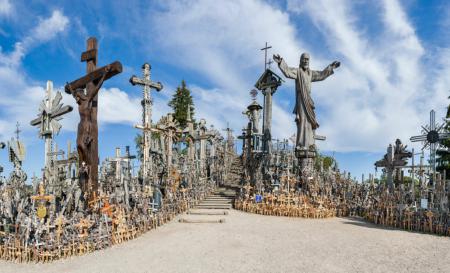An epistolary romp through Catholicism
In 2003, Elizabeth Maguire, publisher of Basic Books, made a proposal: I should write Letters to a Young Catholic as part of a series she was doing that included volumes like Letters to a Young Contrarian, Letters to a Young Chef, Letters to a Young Golfer, Letters to a Young Lawyer, and so forth.
Liz and I had worked well together on The Courage To Be Catholic, but I turned her down. I'd just done a small book of popular apologetics, The Truth of Catholicism, and I didn't think I had another one in me. But Liz was nothing if not persistent, and she kept pressing the question whenever we met, trying on at least two occasions to weaken my resistance by standing me to barbecue and bourbon. I finally told her that, if I could come up with a scheme that got me interested in such a book, I'd do it -- because I'd have to be excited about it if I were going to excite readers.
Not a week later, on a coast-to-coast flight to Los Angeles from Washington, the light shone and the idea hit: do the book as a catechetical travelogue, tying basic themes of Catholic faith to specific Catholic places. And not just obvious places like St. Peter's, the Sistine Chapel, and Chartres cathedral, but funky, out-of-the-way places like Chesterton's favorite pub or the castle where Brideshead Revisited was filmed. By the time I landed at LAX, I had the book outlined on a legal pad, and the next six months of writing it were one of the happiest literary experiences of my life -- and thus one in a long list of debts I owed the great Liz Maguire, who died far, far too young in 2006.
Liz's worthy successor, Lara Heimert, suggested a couple of years ago that I try my hand at a revised and expanded Letters to a Young Catholic. And now the book I've thought of as Letters 2.0 is out -- thoroughly revised, and with five new tour stops added to my epistolary romp through the vast, endlessly fascinating world of Catholicism.
The new letters in the new Letters to a Young Catholic reflect my visits to places I'd long wanted to see but hadn't gotten to before the first edition -- like the remarkable Hill of Crosses in Siauliai, Lithuania -- and places I hadn't thought of writing about before, but now thought it important to take my readers, like the cell in which Maximilian Kolbe died at Auschwitz in 1942: there, we ponder the witness of the modern martyrs, the mystery of evil, and the Evil One. The "New Evangelization" was just beginning to be a prominent theme in Catholic life when Letters 1.0 was being gestated at the end of John Paul II's epic pontificate; now that it's become the banner behind which the liveliest parts of the Catholic Church march, I wanted to write about that and the related theme of the "inculturation" of the Gospel in different human contexts. So the new Letters includes a tour stop at the basilica of Our Lady of Guadalupe, whose image provides an example of what St. John Paul called a "perfect inculturation."
The new Letters also looks at the de-Christianization of much of western Europe, through tour stops at two once-Catholic places, King's College Chapel in Cambridge, England, and nearby Ely Cathedral; there, I probe the complex question of what happened to turn longtime, vibrant centers of Christian life into -- you'll pardon the phrase -- basilicas of the real absence. Letters 1.0 looked at the liturgy through the experience of a marvelous parish, St. Mary's in Greenville, South Carolina; Letters 2.0 looks at the possibility of living All-In Catholicism through another remarkable parish, St. Patrick's in London's Soho Square: a most improbably decadent neighborhood in which to find the fullness of Catholic life on display -- beautiful worship and nitty-gritty community service, evangelical outreach and pro-life witness, intercessory prayer for lost souls.
Come along for the tour, and be reminded that there really is nothing like Catholicism in the world.
- George Weigel is Distinguished Senior Fellow of the Ethics and Public Policy Center in Washington, D.C.



















